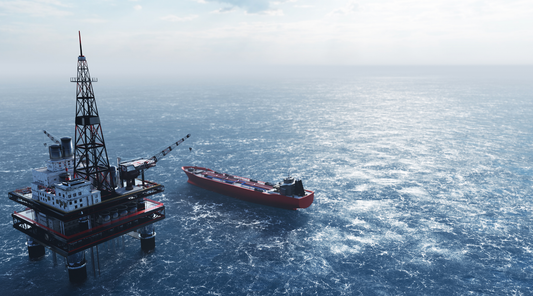Your cart is empty
 Team Rubicon unites the skills and experiences of military veterans with first responders to rapidly deploy emergency response teams in the UK and around the world. This work involves traveling to remote areas. Therefore, traditional communication infrastructure does not exist. Additionally, disaster stricken areas' communications infrastructure is destroyed. We caught up with Team Rubicon’s Tech & Innovation Manager, Chris Lyon to see how the equipment provided by GTC supports the work they do.
Team Rubicon unites the skills and experiences of military veterans with first responders to rapidly deploy emergency response teams in the UK and around the world. This work involves traveling to remote areas. Therefore, traditional communication infrastructure does not exist. Additionally, disaster stricken areas' communications infrastructure is destroyed. We caught up with Team Rubicon’s Tech & Innovation Manager, Chris Lyon to see how the equipment provided by GTC supports the work they do.Team Rubicon
On 25th April 2015, an earthquake measuring 7.8 hit the Kathmandu area in Nepal. General Sir Nick Parker, Former Commander of British Land Forces and Team Rubicon Global Board Member, put out a call to action asking UK veterans to volunteer their time and skills to provide aid in Nepal. He quickly pulled together an impressive team (including a large proportion of Ghurkas). Each member was capable of providing medical aid, search and rescue support. Also, members could assist with translation in several remote regions of Nepal. Within 36 hours of the earthquake, volunteers were travelling to Kathmandu. They were able to assist Team Rubicon USA with delivering humanitarian aid to the remote villages most affected. From the start it was clear that alternative communications would be required on a frequent basis in these remote areas. On a recent mission to Haiti after Hurricane Matthew struck the DeLorme satellite trackers in particular proved invaluable – “Our teams on the ground were in the same town that a young adult was shot by police whilst trying to get food from a distribution point. Crowds soon formed and began to cause unrest and damage property. Our teams were spread out in the area, with limited comms to each other. Because each team had a Delorme switched on and tracking, the UK ops room was able to relay where people were back to the incident commander in the field, and when they were back in safe zones.”Equipment
Team Rubicon uses the Cobham Explorer 510 to access the internet and send/receive vital emails during the aftermath of the Nepal Earthquake (pictured below). “We started using sat coms from day one” says Chris. “Our first mission after the Nepal Earthquake involved the use of DeLorme inReach trackers, as well as Iridium Sat Phones. Since then we have relied heavily on the DeLormes on every mission we have conducted to provide situational awareness for our Operations Centre in the UK.” The rapid expansion of Team Rubicon means their communication requirements have also increased. The team now rely on a wide range of equipment to keep them connected. In addition to the original DeLorme inReach Satellite Trackers, the team now also use Iridium and Inmarsat Satellite Phones, the Inmarsat BGAN Explorer 510 and the Iridium GO! Wi-Fi Hotspot for data transfer. The DeLorme inReach has provided an essential part of Team Rubicon's communication strategy:
“We started using sat coms from day one” says Chris. “Our first mission after the Nepal Earthquake involved the use of DeLorme inReach trackers, as well as Iridium Sat Phones. Since then we have relied heavily on the DeLormes on every mission we have conducted to provide situational awareness for our Operations Centre in the UK.” The rapid expansion of Team Rubicon means their communication requirements have also increased. The team now rely on a wide range of equipment to keep them connected. In addition to the original DeLorme inReach Satellite Trackers, the team now also use Iridium and Inmarsat Satellite Phones, the Inmarsat BGAN Explorer 510 and the Iridium GO! Wi-Fi Hotspot for data transfer. The DeLorme inReach has provided an essential part of Team Rubicon's communication strategy:  As a charity, Team Rubicon are very aware of the cost and usage of the equipment and airtime. Chris admits “Price is definitely a disadvantage. The hardware is expensive, but more so the usage costs. However, money becomes irrelevant during an emergency, when you need the reliability that the equipment brings. All of this just means that we need to be smart with activations, top ups, and deactivations.” In conclusion Chris states “sat comms are very reliable when working in areas that may have lost mobile infrastructure, or where it never existed in the first place. Whilst an expensive way to communicate on a regular basis, sat comms systems are great in an emergency.”
As a charity, Team Rubicon are very aware of the cost and usage of the equipment and airtime. Chris admits “Price is definitely a disadvantage. The hardware is expensive, but more so the usage costs. However, money becomes irrelevant during an emergency, when you need the reliability that the equipment brings. All of this just means that we need to be smart with activations, top ups, and deactivations.” In conclusion Chris states “sat comms are very reliable when working in areas that may have lost mobile infrastructure, or where it never existed in the first place. Whilst an expensive way to communicate on a regular basis, sat comms systems are great in an emergency.”



